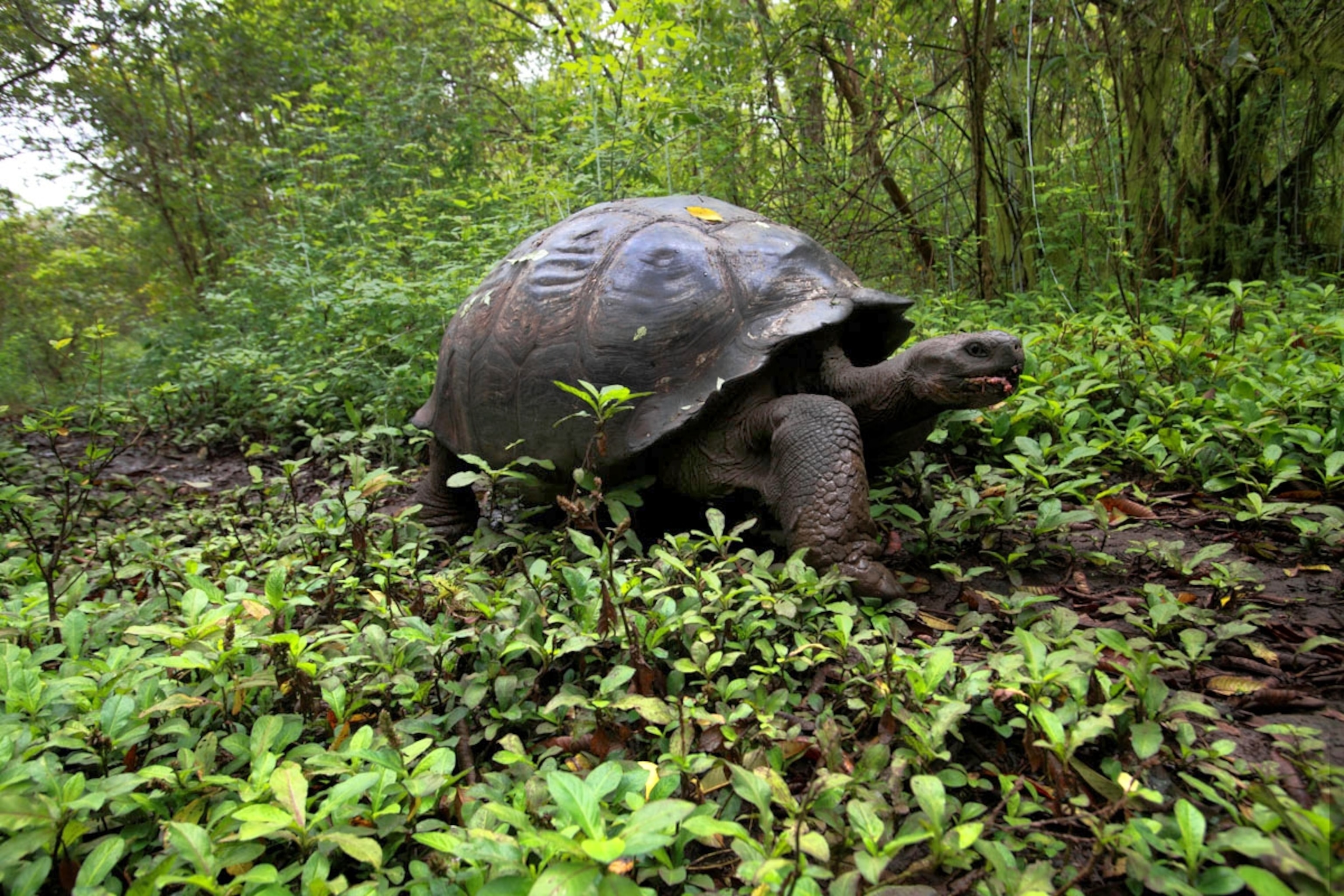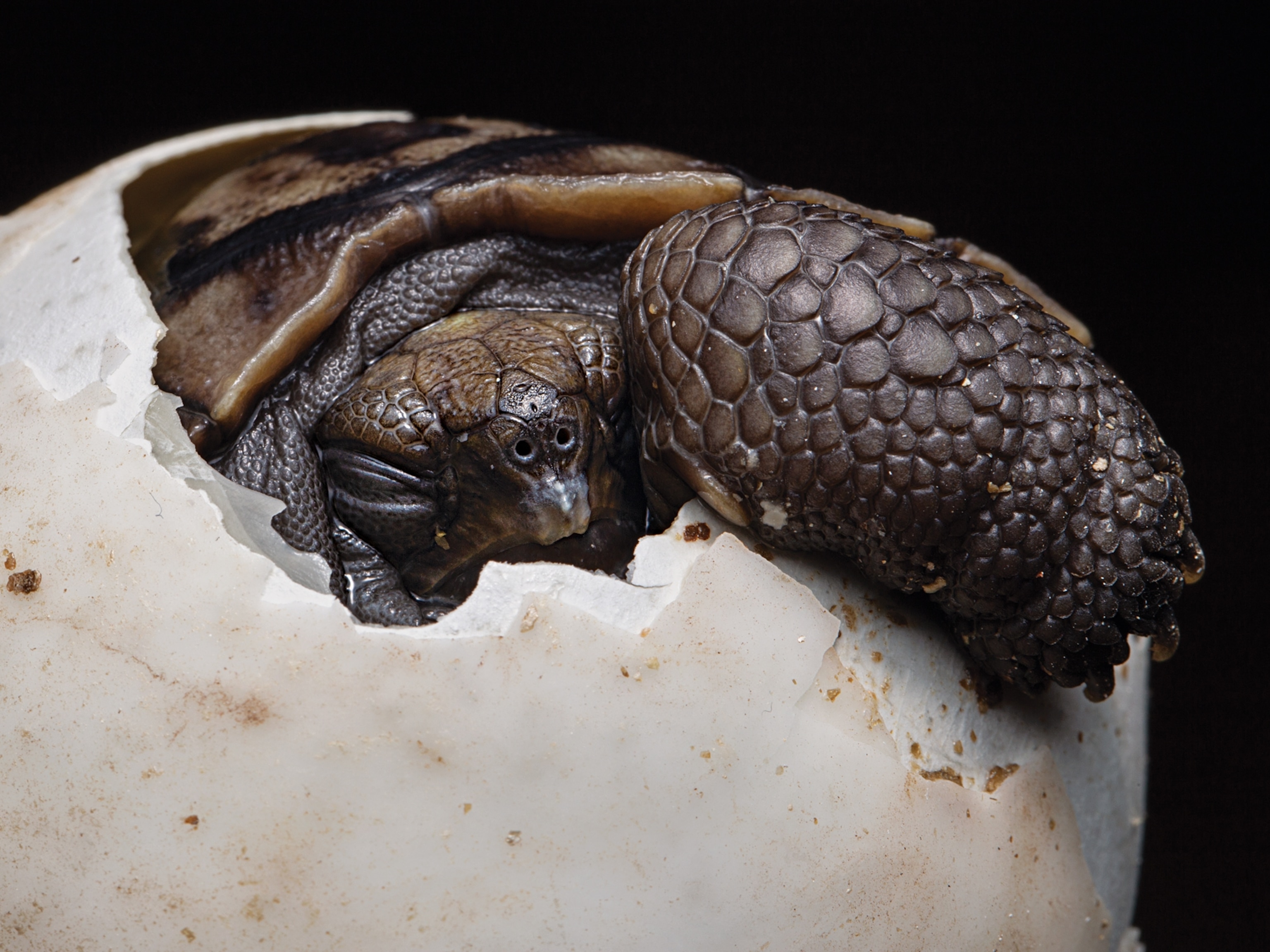
Galápagos Tortoises: Slow and Steady Migrators
They don't cover thousands of miles, but Galápagos tortoises do migrate, study finds.
On a volcanic island in the Galápagos archipelago, giant tortoises (Chelonoidis nigra) such as the one pictured undertake a seasonal migration. The surprising finding comes from a tracking study conducted by Stephen Blake, a researcher at Max Planck Institute in Germany.
"It is every bit the classic migration, just played out on a smaller scale," said Blake, a National Geographic explorer who studies the migration of giant tortoises on Santa Cruz Island in the Galápagos. (Read about great animal migrations in National Geographic magazine.)
He and his colleagues put GPS tags on 18 tortoises and conducted monthly population surveys to find that adult males over 20 years old, and some adult females, undertook a migration averaging about 3.7 miles (6 kilometers) over the course of two to three weeks. That's 650 to 1,000 feet (200 to 300 meters) each day.
There are terrestrial animals that migrate much longer distances—caribou (Rangifer tarandus) hold the record for longest land migration at 700 miles (1,100 kilometers). But this is the first recorded instance of tortoises, which generally travel about 130 to 160 feet (40 to 50 meters) a day, moving from one habitat to another.
The tortoises' journey begins in the humid highlands of Santa Cruz Island, where they load up on grass and perennial plants. Once the rainy season starts in December, they migrate to the lowlands, where herbs and shrubs thrive.
Come June or July, when the rains stop and the vegetation dries up, they return to the highlands. Although adult males and some females make the trek, "other tortoises choose to hunker down," said Blake. The rest of the adult females, and all tortoises under the age of about 20, choose to stay in the lowlands.
"We're just starting to figure out why," said Blake. He believes that females and juvenile tortoises, which have smaller bodies, may be less equipped to tolerate the colder temperatures of the highlands. Younger tortoises might also linger to eat the lowland's highly nutritious broad-leaf vegetation during their growing phase.
The study, published November 21 in the Journal of Animal Ecology, marks the first time that researchers have published evidence demonstrating tortoise migration, although locals have previously noticed their movements—and even told Charles Darwin about them. (Read about what inspired Charles Darwin in National Geographic magazine.)
Now, researchers are beginning to study the migration of other tortoises in the Galápagos Islands. As each island has different environmental conditions, different tortoise movement patterns are likely.
By understanding giant tortoise habitat requirements and migration patterns, scientists can better protect the vulnerable reptile. They can begin mapping conservation threats such as the growth of invasive plant species, the building of roads, and the effects of rapidly increasing tourism to the islands.





